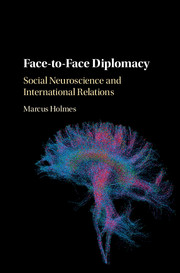Book contents
- Face-to-Face Diplomacy
- Face-to-Face Diplomacy
- Copyright page
- Dedication
- Contents
- Acknowledgments
- 1 The Puzzle of Face-to-Face Diplomacy
- 2 Face Value
- 3 Reassurance at the End of the Cold War
- 4 Unification and Distribution after the Wall Falls
- 5 Overcoming Distrust at Camp David
- 6 “Munich”
- 7 Escaping Uncertainty
- Bibliography
- Index
- References
Bibliography
Published online by Cambridge University Press: 19 February 2018
- Face-to-Face Diplomacy
- Face-to-Face Diplomacy
- Copyright page
- Dedication
- Contents
- Acknowledgments
- 1 The Puzzle of Face-to-Face Diplomacy
- 2 Face Value
- 3 Reassurance at the End of the Cold War
- 4 Unification and Distribution after the Wall Falls
- 5 Overcoming Distrust at Camp David
- 6 “Munich”
- 7 Escaping Uncertainty
- Bibliography
- Index
- References
- Type
- Chapter
- Information
- Face-to-Face DiplomacySocial Neuroscience and International Relations, pp. 271 - 295Publisher: Cambridge University PressPrint publication year: 2018

